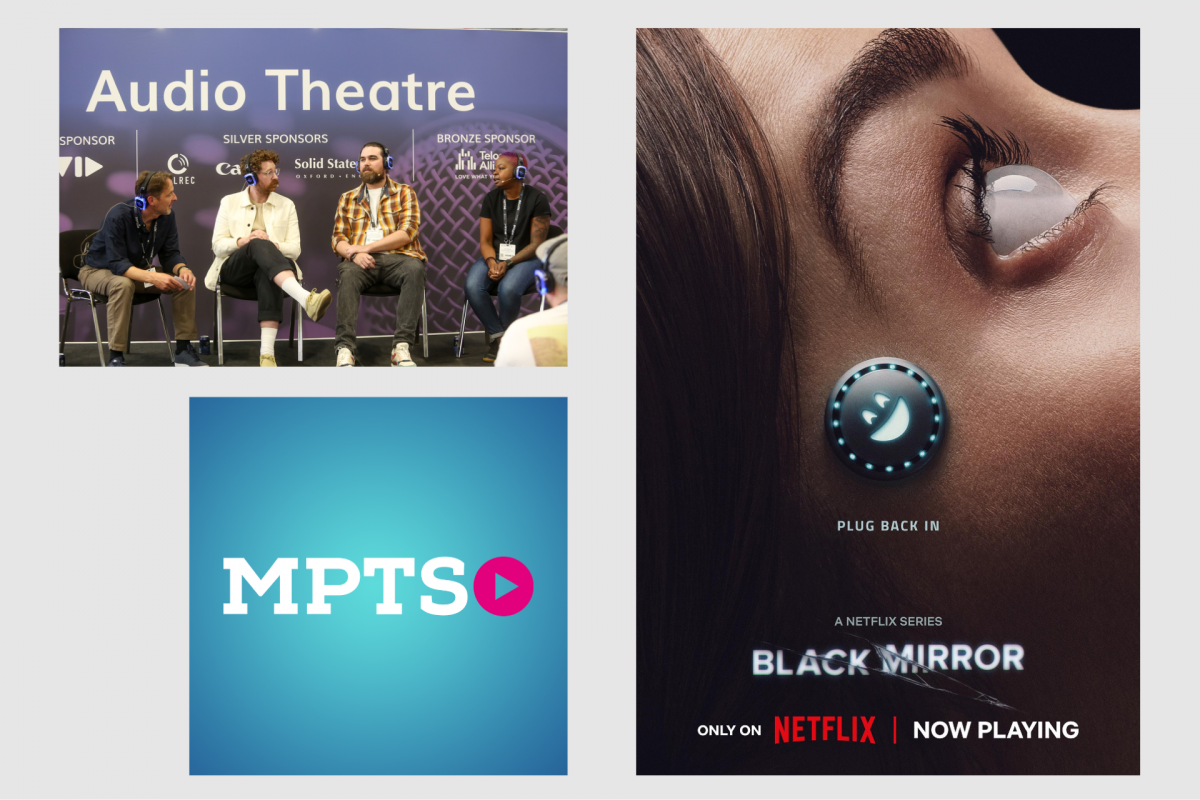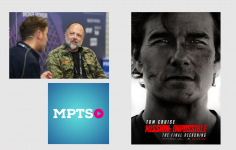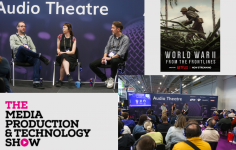The audio theatre at MPTS 2025 in London played host to an intimate and technically rich dive into one of television’s most sonically ambitious projects— Netflix’s Black Mirror Season 7. In a panel titled From Script to Screen: The Sound of Black Mirror, attendees got a rare behind-the-scenes look into how this anthology series crafts its immersive soundscapes.
Moderated by Resurface co-founder Ben Nemes, the session featured supervising sound editor Tom Jenkins, re-recording mixer James Ridgeway, and production sound mixer Jen Annor, each of whom helped bring the distinctive episodes of the latest season to life. With episodes as varied as a retro sci-fi homage (USS Callister) and the Casablanca-tinged Hotel Reverie, the trio unpacked the creative decisions and logistical complexities of shaping the Sound of Black Mirror.
A World of One-Offs
What sets Black Mirror apart—beyond its existential dread and Charlie Brooker’s technological prophecy—is its anthology format. Each episode exists in its own universe, which means the audio team must start from scratch every time.
“There’s no Queen Vic, there’s no Rick Grimes,” said Nemes, referring to the usual TV constants. Jenkins elaborated, “Creatively, it’s incredibly exciting… the different genres are so broad.” But he was also candid about the challenges: “Whilst we are a consistent team, composers are often different. The directors are different. The whole production team could be different.”
Ridgeway added, “Tom and I are two of maybe 20 people who are consistent across episodes. It’s like doing a series of back-to-back feature films.”
A major constant, however, is creator and showrunner Charlie Brooker, whose fingerprints are all over the sound. “He’s got a fascination with sound,” said Ridgeway. “If you put in a video game sound, he’s there on YouTube checking that it’s the right one.”
This can be a blessing or a curse, depending on how right—or wrong—the team gets it. Jenkins recalled the ordeal of designing audio for the episode Plaything. “It was an 11-month process… hundreds of iterations… because I kept doing it wrong,” he said with a laugh.
But Brooker’s involvement is always story-driven. “Any conversation we’re having about the sound of video games or technology… it’s never just to be accurate,” Jenkins noted. “It’s, ‘How does it support the story? How does it make our characters feel?’”
A Deep Dive: Hotel Reverie
In particular, the discussion centred on Hotel Reverie, a standout episode that straddles a modern tech dystopia and 1940s Hollywood glamour. The episode features a contemporary actress inserted into a classic film using a fictional AI platform called Redream. The sound design had to toggle between these eras—sometimes within the same scene.
“There was a meeting quite early on where we were brought onto Zoom to discuss, ‘How far do we go?’” Ridgeway recalled. One key debate was whether to record dialogue using actual vintage microphones. “I said, ‘I don’t have those mics, and I wasn’t born then” Annor joked.
Ridgeway argued against the idea: “It’s not just the mic; it’s the old cables, the tape recorder… and we might not even use it in the mix.”
Instead, they opted to capture pristine production sound and then degrade it selectively in post. “We had to make it sound like 1940s cinema when we were in the film, but not be abrasive when cutting back to the control room or other modern-day environments,” Ridgeway said.
Mixing Worlds: Audio Inception
To maintain narrative clarity, the sound had to indicate not just where the characters were, but how they were experiencing that world. “It’s audio Inception” said Jenkins. “You’re either in the movie, in the control room watching the movie, or listening through an in-ear comms setup.”
The team created internal categories: the film score (for the 1940s sequences) and the Black Mirror score. “The film score was often in mono, thin and crunchy. But we allowed ourselves to break the rules toward the end for emotional effect,” Ridgeway said.
Jenkins emphasized the importance of emotional continuity. “It was never a one-size-fits-all treatment,” he said. “You needed to track the emotion of the characters.”
For Annor, the early collaboration was a rare and welcome change. “It was like a dream come true to actually be able to talk to the sound design team during the shoot,” she said. “On some jobs, you never even speak to them—they’re not hired yet.”
That early engagement paid off. “It meant we could experiment, make mistakes, and find happy accidents,” said Jenkins. “If you wait until the final mix to make those decisions, you don’t have the time.”
Advice for Creators: Start Early, Talk Often
Asked what advice they would offer producers or directors working with sound, the panelists were unanimous: involve your sound team early.
“Time should be given for these things,” said Annor. “People think, ‘You can hear it, it’s done.’ But there’s so much nuance.”
“Netflix has been supportive,” Ridgeway noted. “But what matters is adapting the process to the episode. These aren’t 22-minute sitcoms. Every episode is a different length, a different world.”
Sound Favorites from the Team
To close the session, an Audience member asked the panelists their favorite Black Mirror episode from an audio perspective.
Annor chose San Junipero: “It was just a beautiful piece of writing—and I could relate to the story.”
Ridgeway went with Bete Noir “Bete Noir is just an office drama… with a big sci-fi twist. And Callister had one of the most fun scores I’ve ever worked with—homages to so many sci-fi themes.”
Jenkins echoed the love for Callister: “I grew up a Star Trek and Star Wars nerd. Getting the script, realizing we’d get to do space battles with our own take on that sound—it was just exciting.”
Final Thoughts
Black Mirror may be known for its bleak outlook on technology, but for those behind the scenes, it’s a creative playground. Season 7 proves that audio storytelling isn’t just an afterthought—it’s essential to the emotional and narrative fabric of the series.
“We’re not just making things sound good,” Jenkins said. “We’re telling the story—with emotion, with clarity, and with the freedom to experiment.”
Thanks to Netflix, the panel participants and attendees. For more behind-the-scenes insight into Black Mirror, check out Netflix’s Tudum page.



